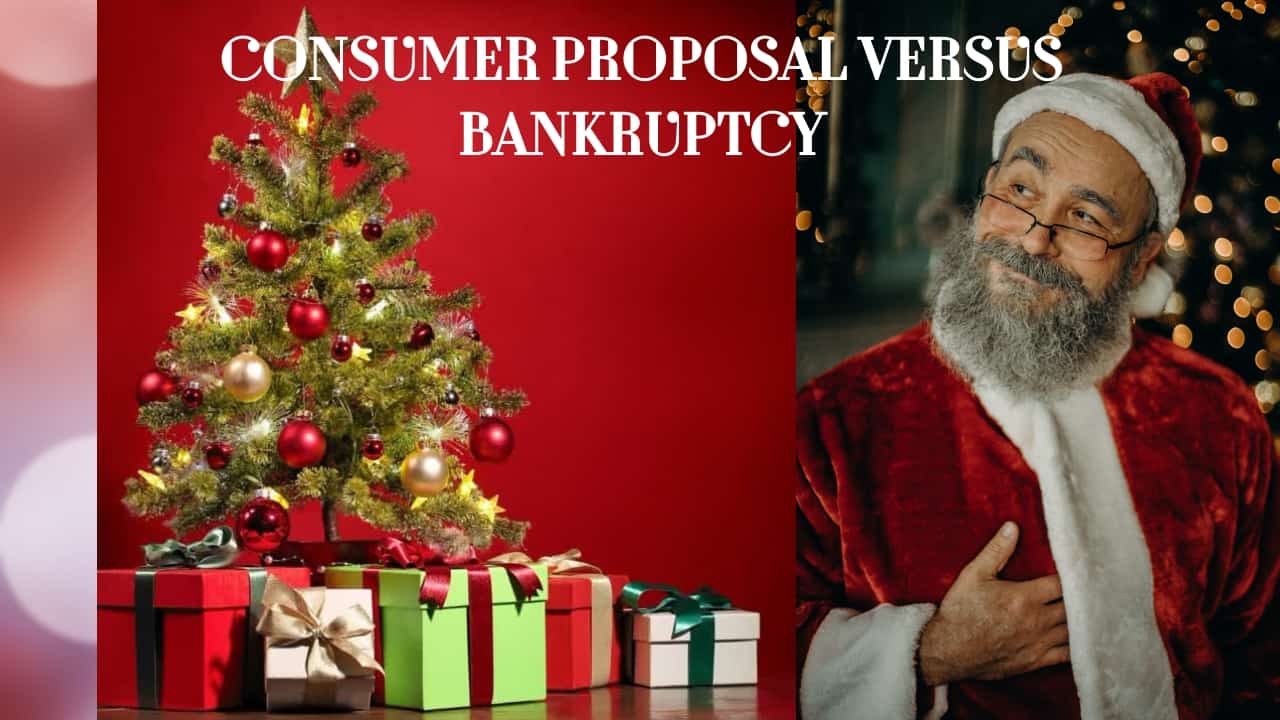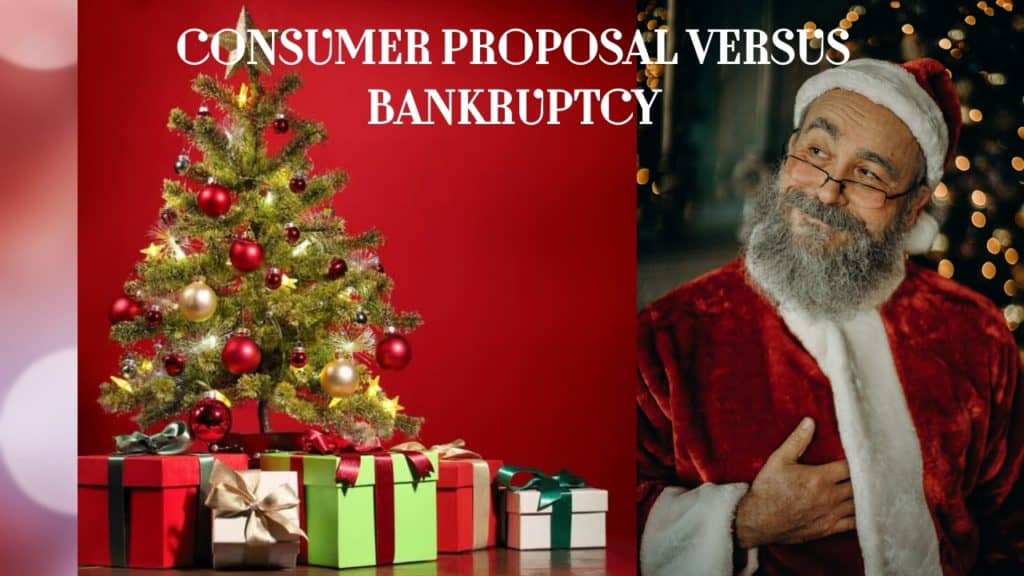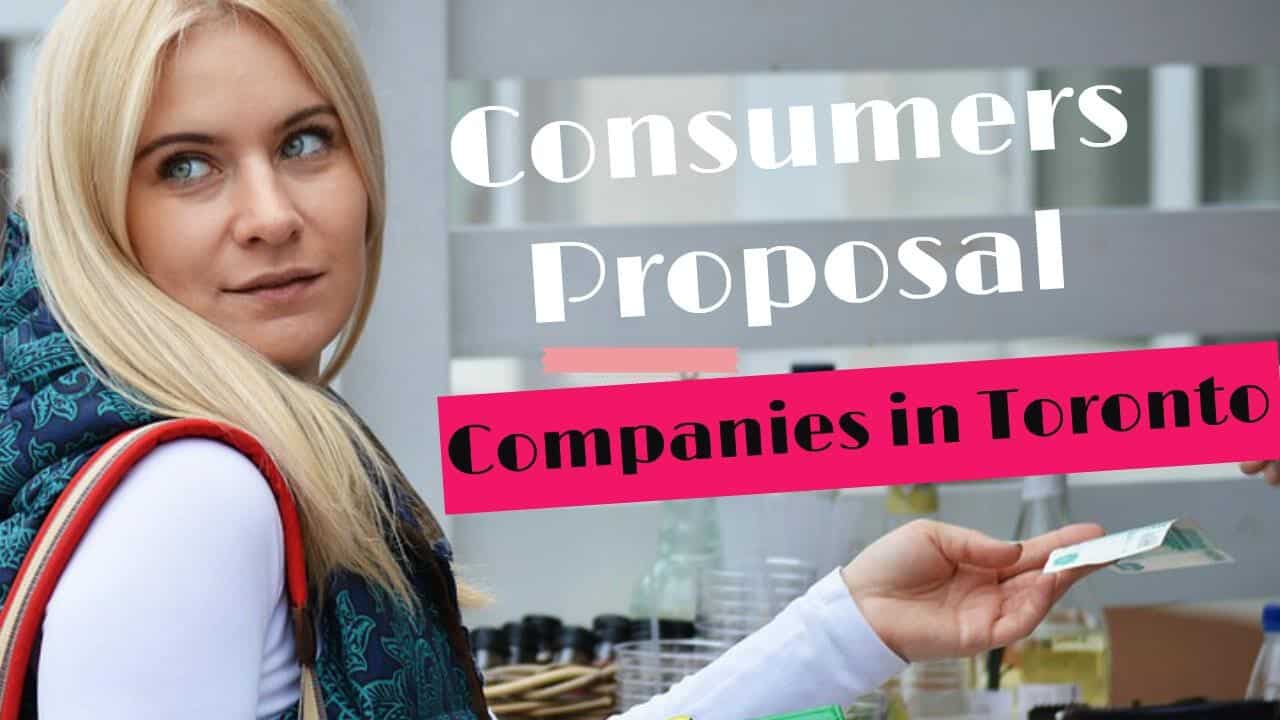We hope that you and your family are safe, healthy and secure during this coronavirus pandemic.
Ira Smith Trustee & Receiver Inc. is absolutely operational and Ira, in addition to Brandon Smith, is readily available for a telephone consultation or video meeting.
Disadvantages of consumer proposal: What is a consumer proposal?
As regular readers of Brandon Blog know, I have written many blogs about consumer proposals. I normally focus on the advantages of a consumer proposal. As I have never written about the disadvantages of consumer proposal, I thought I would do so now. There are many more advantages than there are disadvantages; however, there are a couple of points you should know. Some people may see them as drawbacks or disappointments. It depends on your unique situation.
Consumer proposals can be called an individual’s insolvency debt settlement agreement in Canada. It is a proposal to your unsecured creditors to pay off a portion of your frustrating unsecured debts over a set period of time. If you successfully complete the consumer proposal by making all the needed payments, the total amount of your unsecured financial obligations are forgiven at the end of the settlement period. Consumer proposals are created to get the debt freedom to consumers who cannot afford to pay off their total debt. It is a legally binding contract between the debtor and the unsecured creditors to eliminate debt carried out under the Bankruptcy and also Insolvency Act (Canada).
So consumer proposals are the best alternative to bankruptcy. To find out about all the advantages of consumer proposals, I recommend my recent blog post, CONSUMER PROPOSAL FAQ: ANSWERS TO 10 TANTALIZING CONSUMER PROPOSAL QUESTIONS.
Disadvantages of consumer proposal: When is a consumer proposal appropriate?
Consumer proposals are appropriate for individuals that:
- Have a secure income flow, such as from full-time employment.
- Are insolvent.
- Are serious about getting rid of all of their unsecured financial obligations by paying only a portion of the total owed.
- Wish to stay clear of bankruptcy.
To discover if a consumer proposal is an appropriate selection for you, set up a no-cost conference with a licensed insolvency trustee (formerly called a bankruptcy trustee or a trustee in bankruptcy) (LIT or Trustee) to discuss your personal scenario. The LIT will examine your monetary situation and see if you have the economic capacity to efficiently complete a consumer proposal. The Trustee will certainly describe the pros and cons of the various options that might assist you to resolve your financial troubles.
If you choose to submit a consumer proposal, the LIT will work with you to develop a proposal that benefits both you as well as your unsecured creditors. If you file a customer proposal, you have to:
- give the LIT a complete list of your assets and liabilities;
- attend the first meeting of creditors, if one is requested by your creditors;
- participate in 2 counselling sessions;
- keep the LIT updated of any change of address; and
- help the LIT in administering the proposal.
Disadvantages of consumer proposal: When is a meeting of creditors held?
The first disadvantage to talk about is when is a meeting of creditors held? The only time a meeting of creditors is called in consumer proposals is if creditors representing 25% or more of the proven claims filed request it. This would mean that at that point, you do not have a great relationship with creditors. They do not like the original consumer proposal you have submitted for their consideration.
A request for a meeting must be made by the creditors within 45 days of the filing of the proposal. The Office of the Superintendent of Bankruptcy Canada (OSB) can also direct the LIT to call a meeting of creditors at any time within that same period.
The meeting of creditors must be held within 21 days after being called. At the meeting, the creditors vote to either accept or refuse the proposal, or any amended proposal tabled at the meeting.
If no meeting of creditors is requested within 45 days of the filing of the proposal, the proposal will be deemed to have been accepted by the creditors regardless of any objections received.

Disadvantages of consumer proposal: How will a consumer proposal affect my credit rating?
The disadvantages of consumer proposal include the fact that it will have a negative impact on your credit rating. Generally, a person who declares bankruptcy is assigned the lowest possible credit score. Normally, with proposals, you are assigned a rating of R7. With bankruptcies, it is a worse rating of R9, the lowest possible. With proposals, The record of your consumer proposal will show up on your credit report. It will certainly be there for possibly 3 years after you have actually fully finished making all the payments. This is less than how long it will stay on your credit report because of bankruptcy.
Your ability to obtain and make use of credit after a consumer proposal relies on encouraging lenders of your personal financial maturity as well as the capability to repay the credit you are requesting. There are no guarantees and nobody is required to extend credit to you.
Once you have fulfilled the terms of your consumer proposal, you will receive a “certificate of full performance.” To make sure your credit record is updated, send a copy of that document to the major credit-reporting agencies, TransUnion Canada and Equifax Canada. Be sure to keep all of your proposal-related documents for reference by future lenders.
Disadvantages of consumer proposal: Why are consumer proposals rejected?
Adding to the disadvantages of consumer proposal is the possibility that the creditors will decline it. Consumer proposals are commonly the last option for creditors, other than for consumer bankruptcy. In most cases, creditors accept a well thought out debt settlement plan since they wish to recuperate some of the funds that would otherwise be lost forever. Consequently, LITs who prepare well-drafted and properly explained consumer proposals get them approved by creditors.
Nevertheless, creditors can reserve their right to reject them. When consumer proposals are rejected, it’s commonly a result of the belief of the creditor that the proposal is in reality, not a better realization than in a bankruptcy process. Conversely, creditors see that they may need to wait as much as 5 years to receive what they deem a paltry reward. They prefer to finish the pain now and get nothing in the individual’s bankruptcy than have to carry holding and administering the account for 5 years to get next to nothing, notwithstanding it is a better outcome than the borrower’s filing for bankruptcy.
Disadvantages of consumer proposal: What happens if you miss a consumer proposal payment?
As long as you are following the agreed terms of your proposal, your creditors cannot take any further action against you. If you fail to meet the agreed terms of your proposal and/or miss three months of payments, the proposal will be deemed annulled. If this happens, you are barred from filing another consumer proposal.
However, there is a temporary COVID-19 special accommodation now allowed for by the OSB. A Trustee can explain what the special rules are.
So, subject to certain temporary COVID-19 accommodation, one of the disadvantages of consumer proposal is that if you default by missing 3 months of payments, your proposal is deemed annulled. The only thing left would be a bankruptcy filing.

How long does it take to rebuild credit after a consumer proposal?
Another one of the disadvantages of consumer proposal is that you will need to rebuild your credit. Although it is difficult and takes time, it is not impossible. To begin rebuilding your credit after a consumer proposal, work with your Trustee to make sure that everything you do is reported to the credit bureaus. The more positive reports that you have on file with TransUnion and Equifax, the better your credit score will be.
I always advise clients that the first thing they should do is get a secured credit card. Not the kind you buy at the drug store. Rather, it is a credit card from one of the banks. You put up a sum of money that the bank will keep as a security deposit, They then issue you a credit card with a limit equal to the deposit you put up. Each month, when you pay the credit card off in full on time, the bank reports this to the credit bureaus. Every month they report favourably is another month that you are working on improving your credit score.
The next thing you can do is take out a small loan to invest the funds in an RRSP. Use your tax refund or the extra tax you did not have to pay, to pay down the loan. Make sure that you pay off the balance of the loan within 1 year. Make your monthly payments on time. Again, your proper use of this credit will be reported to the credit bureaus and will work in your favour.
It will take a few years, and initially you may pay a higher rate of interest than if you didn’t need to file a consumer proposal. After a few years of using credit properly, you will find that your credit is now rebuilt.
Disadvantages of consumer proposal: Are consumer proposals bad?
In my view, the disadvantages of a consumer proposal are not enough to ever stop anyone from entering into the only government-approved debt settlement plan. To summarize, I see the disadvantages as:
- The possibility that it may take a lot longer and be more expensive than you hoped for to reach a deal with your creditors if 25% or more of the dollar value of the proven claims vote against your initial offer.
- Negative impact on your credit rating.
- Rejection by your creditors and no agreement on an amended proposal forcing you into bankruptcy.
- You miss 3 payments causing you to default on your consumer proposal. Again, if this happens, your only real option is to file for personal bankruptcy, which is what you tried to avoid.
- It will take you time to rebuild your credit.
- It only allows you to wipe away your unsecured debt. If you have secured debt that you cannot afford to continue paying, your LIT will counsel you on the best way to deal with that secured debt BEFORE you file.
Disadvantages of consumer proposal summary
I hope you enjoyed the disadvantages of consumer proposal Brandon Blog post. If you are concerned because you or your business are dealing with substantial debt challenges and you assume bankruptcy is your only option, call me. It is not your fault that you remain in this way. You have actually been only shown the old ways to try to deal with financial issues. These old ways do not work anymore.
The Ira Smith Team utilizes new modern-day ways to get you out of your debt difficulties while avoiding bankruptcy. We can get you the relief you need and so deserve.
The tension put upon you is big. We know your discomfort factors. We will check out your entire situation and design a new approach that is as unique as you and your problems; financial and emotional. We will take the weight off of your shoulders and blow away the dark cloud hanging over you. We will design a debt settlement strategy for you. We know that we can help you now.
We understand that people and businesses facing financial issues need a realistic lifeline. There is no “one solution fits all” method with the Ira Smith Team. Not everyone has to file bankruptcy in Canada. The majority of our clients never do. We help many people and companies stay clear of bankruptcy.
That is why we can establish a new restructuring procedure for paying down debt that will be built just for you. It will be as one-of-a-kind as the economic issues and discomfort you are encountering. If any one of these seems familiar to you and you are serious about getting the solution you need, Contact the Ira Smith Trustee & Receiver Inc. group today.
Call us now for a no-cost consultation.
We will get you or your business back up driving to healthy and balanced trouble-free operations and get rid of the discomfort factors in your life, Starting Over, Starting Now.
We hope that you and your family are safe, healthy and secure during this coronavirus pandemic.
Ira Smith Trustee & Receiver Inc. is absolutely operational and Ira, in addition to Brandon Smith, is readily available for a telephone consultation or video meeting.




